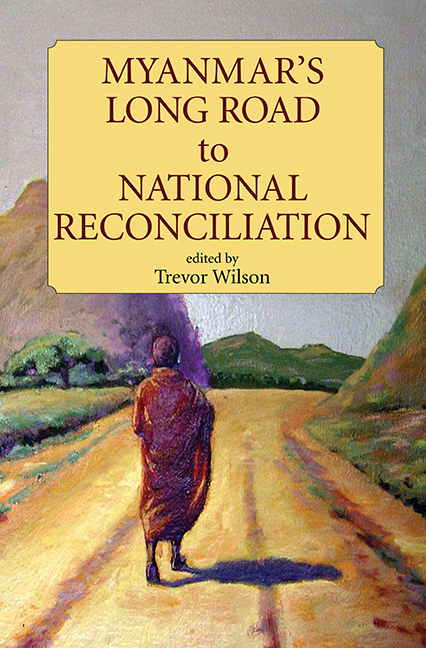Book contents
- Frontmatter
- Contents
- Acknowledgements
- The Contributors
- Glossary
- Overview
- I Perspectives on Recent Political Developments
- II Perspectives on the Economy and on Agricultural Development
- III Perspectives on National Reconciliation and Civil Society Development
- 8 Civil Society and Legitimacy: The Basis for National Reconciliation in Burma/Myanmar
- 9 Making a Responsible Corporate Contribution to Modern Diplomacy in Myanmar
- 10 Creating an Environment for Participation: International NGOs and the Growth of Civil Society in Burma/Myanmar
- 11 More Than Saving Lives: The Role of International Development Agencies in Supporting Change Processes in Burma/Myanmar
- 12 Exit, Voice and Loyalty in Burma: The Role of Overseas Burmese in Democratising Their Homeland
- IV Charting the Way Ahead
- Index
10 - Creating an Environment for Participation: International NGOs and the Growth of Civil Society in Burma/Myanmar
from III - Perspectives on National Reconciliation and Civil Society Development
Published online by Cambridge University Press: 21 October 2015
- Frontmatter
- Contents
- Acknowledgements
- The Contributors
- Glossary
- Overview
- I Perspectives on Recent Political Developments
- II Perspectives on the Economy and on Agricultural Development
- III Perspectives on National Reconciliation and Civil Society Development
- 8 Civil Society and Legitimacy: The Basis for National Reconciliation in Burma/Myanmar
- 9 Making a Responsible Corporate Contribution to Modern Diplomacy in Myanmar
- 10 Creating an Environment for Participation: International NGOs and the Growth of Civil Society in Burma/Myanmar
- 11 More Than Saving Lives: The Role of International Development Agencies in Supporting Change Processes in Burma/Myanmar
- 12 Exit, Voice and Loyalty in Burma: The Role of Overseas Burmese in Democratising Their Homeland
- IV Charting the Way Ahead
- Index
Summary
I have long wondered about an early experience that I had in Burma/Myanmar shortly after I arrived in the country in January 1996. With family and some friends we had hired a small bus and driver and made our way to Pagan and Mandalay, and then back to Yangon. The travel, whilst somewhat exhausting due to the state of disrepair of the roads, was a fascinating introduction to the country in which we had chosen to live. It was on the final leg, and perhaps three or four hours south of Mandalay, in the middle of the countryside with not a village or town in sight, that we hit a very long line of traffic. The single-lane track (at least, that is how it seemed to us, having become used to driving on multiplelane highways) upon which we were travelling was the main road between Yangon and Mandalay. It soon became obvious that the traffic was going no place fast, and while we tried to make the best use of our time by engaging passers-by on foot and bicycle in idle conversation (they, it must be said, were highly amused at the sight of a mini-bus full of foreigners, and were quite open in their efforts to communicate), I did start to wonder what could be holding us up for such a length of time in the middle of the country side. As the traffic inched forward, I noticed that the face of our driver remained calm and serene, and that no-one else appeared unduly concerned with the lack of progress (I recall how frustrated I had felt at the time). Finally, we inched up to the problem. It was not an accident, as I had feared, but in the middle of the road, parked at a 45-degree angle across the single Yangon-bound lane, was a small truck, of no more than two tonnes.
- Type
- Chapter
- Information
- Myanmar's Long Road to National Reconciliation , pp. 188 - 217Publisher: ISEAS–Yusof Ishak InstitutePrint publication year: 2006



